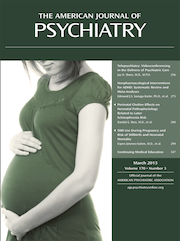Pediatric psychopharmacology is a highly controversial topic that has garnered significant attention. Much research has been conducted on this topic in recent years, and the field is rapidly changing. As such, many clinicians continue to search for a comprehensive, reliable, and up-to-date reference to turn to while in their busy clinics. Written and edited by leading experts in the field of child and adolescent psychiatry, the second edition of the Clinical Manual of Child and Adolescent Psychopharmacology is an excellent resource. This reference manual is replete with the most recent evidence-based recommendations for the treatment of children with emotional and behavioral disturbances. Each chapter contains a succinct review of the latest research, along with valuable tables and clinical pearls. There is also an ample reference section included in every chapter to provide the reader with additional reliable resources.
The manual begins, quite appropriately, with a chapter that discusses developmental aspects of pediatric psychopharmacology. There are excellent tables that provide information on Food and Drug Administration (FDA)-approved indications and off-label use of specific medications. In addition, there are tables that detail the role of cytochrome P450 enzymes and their relationship with these agents. Most importantly, the author of this section discusses safety, ethical issues, and regulatory aspects associated with prescribing psychotropic medications in this vulnerable population.
Following this, the manual is then aptly separated into chapters based on diagnosis. There are specific chapters on attention deficit hyperactivity disorder, disruptive behavior disorders and aggression, anxiety disorders, major depressive disorder, bipolar disorder, autism and other pervasive developmental disorders, tic disorders, and early schizophrenia and psychotic illnesses.
Each of these chapters provides especially useful tables about the pharmacologic agents discussed, and frequently there is discussion about their use in acute, continuation, and maintenance treatment. The tables also provide starting doses, typical doses, and duration of action. There are data regarding randomized controlled trials that are expertly summarized. In the chapter on pediatric bipolar disorder, there is an excellent table that details common side effects and then provides intervention strategies. Another nice feature seen in this manual is the discussion of the importance of nonmedication interventions and the role of the family, support groups, parent management training, and specific types of psychotherapy.
Two particularly helpful chapters are that of major depressive disorder and autism and other pervasive developmental disorders. Each of these topics has been somewhat contentious for various reasons. In recent years, antidepressants have been closely examined in the child and adolescent population due to an increased risk of suicidal ideation and behavior. This manual provides an exceptional discussion about the use of these medications in this age group. The authors address the increased risk of spontaneously reported suicide adverse events and provide expert guidance on how to interpret the findings and assess the limitations from the FDA-sponsored meta-analysis. The chapter on autism and other pervasive developmental disorders guides readers toward innovative pharmacologic treatment strategies based on target symptoms, such as irritability, motor hyperactivity, and inattention and repetitive behaviors, while emphasizing the importance of a multimodal treatment approach.
In summary, this manual is a particularly good resource for the busy, practicing clinician at a time in which new evidence is rapidly emerging in the field. It is heavily supported by relevant and up-to-date research and will serve to expertly guide clinicians as they treat a vulnerable population.

